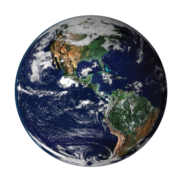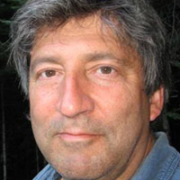How Studying in Asia Made Me See the Need for a Steady State Economy
by Jan de Graaf
Crossing the border from Singapore to Malaysia allows anyone to see the real-life benefits that can come with economic growth. Singapore is modern, prosperous, organized, clean, safe and efficient. Malaysia less so. On Malaysia’s side of the border the roads aren’t as good, the traffic signs not as clear, the sidewalks not as clean and the greenery not as well maintained. Singapore’s transformation looks impressive, especially since it was expelled from Malaysia only in 1965.
I noticed this cross-border difference during a two-year master’s program in public policy at the National University of Singapore. Soon I learned that Singapore’s rapid economic transformation came with considerable tradeoffs. A lack of political freedom is one of them. Singapore’s political system — dominated by one ruling party since independence — has yet to prove its resilience. But Singapore’s economic growth has provided obvious benefits too; many citizens in southeast Asia would forego political freedoms for Singapore’s level of prosperity. Who wouldn’t want to raise children in a safe, efficient, tropical but air-conditioned country with little corruption and top-quality education and healthcare?
Paradoxically, the answer seems to be: Singaporeans themselves. Singapore has one of the lowest fertility rates in the world. The government is vigorously encouraging couples to have babies, though so far with little effect. The former prime-minister Lee Kuan Yew — one of Singapore’s founding fathers — stated last year that Singapore can “fold up” if citizens do not reproduce. He said, “The answer is very difficult but the problems, if we don’t find the answers, are enormous.” Like many other countries, Singapore is being blinded by fears of a shrinking population and ignoring an obvious fact: one of the tiniest countries in the world can’t grow its population forever. The optimal population size is likely less than what it is now, not more.
Singapore’s population has increased almost 280% since independence: from 1.9 million in 1965 to 5.3 million people today. Its land area, on the other hand, has increased by only 23% (it was 224 square miles at independence and after some reclamation of land from the sea, it is now 276 square miles — about the size of Chicago). The country is squeezed in between Malaysia, a narrow sea strait and Indonesia. Physical expansion in such a physically bounded space cannot continue indefinitely. It has to stop growing at some point, a principle that applies not just to the number of people, but also to economic production and consumption.

The glitz of Singapore (photo by C. Andersson) and the slums of Malaysia (photo by D. Nunuk) are different, but equally unsustainable results of continuous economic growth.
Singapore like any country, needs to achieve demographic, political, economic and environmental sustainability. Maintaining a healthy environment is often under-appreciated, even though it is just as important as (and directly related to) the other types of sustainability in this list. I recognized this when I lived in China during a semester abroad and traveled through other parts of Asia. I breathed the toxic air in Beijing and Shanghai, walked through piles of waste in India’s urban slums, and saw the vast palm-oil plantations that have replaced tropical forests in Malaysia and Indonesia. If all these countries were to emulate Singapore, which is in a state of ecological overshoot, the environmental impact would be disastrous.
China seems to be doing its best to follow in Singapore’s ecological footsteps. It has managed to lift more than 600 million people out of poverty in roughly thirty years, an unprecedented achievement. Real GDP growth averaged 10% per year from 1978 to 2011. Its economy is more than 30 times bigger than it was in the late 1970s. It will soon be the biggest economy in the world. At the same time, China is in absolute terms now also the world’s largest energy consumer, greenhouse-gas polluter, crop importer, cement consumer and potash consumer, to name only a few things. How many more examples of explosive growth like China’s can the planet withstand?
India, another Asian giant, cannot do the same thing China has done. India has about as many people as China (1.2 billion versus 1.35 billion; each country has about one-sixth of the world population). Yet, India’s economy is less than one-fourth the size of China’s as measured by GDP. What if India’s economy had already grown to the size of China’s economy, with similar physical inputs (e.g. minerals, food, coal, etc.) and outputs (e.g. air pollution, soil depletion, biodiversity loss, etc.)?
Clearly, we need to take steps to achieve sustainable and equitable prosperity around the world. But trying to achieve prosperity through ever more growth — a method that irreversibly damages the planet, depletes natural resources and destabilizes societies over the long term — is not the way. The elephant in the room, the global problem that needs to be solved is “us” — the rich, industrialized part of the world that generates an unsustainable ecological footprint. “We” have only been able to live beyond our means because enough other people don’t. Communities in rural India, Namibia or Costa Rica could continue living their lives, with modest ecological footprints, for centuries without being a threat to global civilization and the planet. “We” in Europe, North America, Singapore, Shanghai and other rich parts of the world, on the other hand, cannot.
Still, many people in the world aspire to the lifestyles of Singapore, coastal China and the West. What if more and more people demand their fair share? Aside from the energy received from the sun, the Earth is a closed system with finite resources, so “we” the over-consumers have to get used to living with a much more modest ecological footprint. The predicament of the over-consuming countries raises some fundamental questions: how can we call our current economic growth “progress” if it can never be attained by all? And how can we call our current economic growth “progress” if it is based on depleting precious nonrenewable resources?
Real progress would take the form of new political and economic models that achieve a sustainable and resilient equilibrium. Unfortunately, as my home country (the Netherlands) and the nations I visited in Asia are demonstrating, we are far from it. That’s why I volunteer with CASSE to promote the concept of a steady-state economy. The over-consuming nations of the world are teaching an important lesson: the current spoils of continued economic growth come with a spoiled foundation for achieving continued prosperity in the future. Are we smart enough to heed the lesson?
—
Since graduation in Singapore, Jan de Graaf has been an intern at the United Nations headquarters and a trainee at the European Commission. He now works in the clean energy sector in Africa for an American start-up company.





 2018 Tony Webster
2018 Tony Webster

The world has badly needed people with your current insight for centuries; especially the last five decades. For that reason more and more people have become aware of that and chosen to speak up. The Club of Rome did; UNEP was created, and the general points you are making have been aired millions of times by now. Very many with no power to change things fundamentally, knows what needs to happen. Moving from ‘growthmania’ to ‘ecological economics’, however, is a paradigm shift of revolutionary nature. It’s a lot more difficult than going to the moon where a small step for man was a giant step for mankind.
Singapore has unique opportunities to achieve a sustainable population level and environment. Given that fertility is below replacement, and that there are millions from around the world seeking to migrate to Singapore, they can explicitly control population for growth, stability or preferably for reduction. Diversity is key to innovation – it already has highly diverse population and again modest, targeted, immigration can support ongoing diversity while enabling population stability or reduction.
There is sufficient wealth to support environmental restoration and conversion to the cleanest new technologies and sustainability practices and approaches such as the circular economy. The wealth of Singapore is as a trade hub, currently physical goods and increasingly financials. The education levels are very high and the energy and diversity bode well for ongoing innovation, trading ever more information. The single level of government (rather than city, state & federal) can direct both society and the economy effectively toward sustainability practices.
Very few countries have all these advantages – let’s hope Singapore can play a lead role as a model for a sustainable economy and society.
Singapore is one of the most vulnerable nations on the planet. It has a national per capita Biocapacity of virtually zero because it has no natural capital. It therefore has no hope of ever being ecologically sustainable (see http://www.footprintnetwork.org/en/index.php/GFN/page/trends/singapore/).
Singapore must import Biocapacity from the rest of the world. It is not a model for sustainable development (SD). A model for SD is one where a nation’s Ecological Footprint is less than its Biocapacity and where, apart from ensuring income and wealth is equitably distributed, it has a strong primary sector (agriculture and resource-extractive industries), a stong secondary sector (manufacturing), and a strong tertiary sector (services). Strength is required in all sectors because the output of the primary sector constitutes the input of the secondary sector; and the output of the secondary sector forms the input of the services sector. The shift towards ‘services’ by high-GDP nations over the past 40 years is not a sign of ‘economic maturity’ but a case of ‘economic stupidity’. Europe is suffering because of it. Singapore curently has a stong secondary sector but its lack of a primary sector leaves it completely reliant upon the importation of natural resources and the exportation of its solid wastes – and that cannot be guaranteed in the future.
I applaud your assault on the preoccupation with economic growth as the primary measure of success. However, it is important to recognise that economic activity comes in many forms, some of which seriously degrades environmental resources, some of it has little impact, and some actually improves environmental resources. Do we want to condemn growth in environmentally valuable resources? We need to also consider how those that desperately need safer, more fulfilling lives can achieve that with the support of food, educational, health and housing services (yes, growing the economy) that place little demand on the environment? Yes, the worship of economic growth is very destructive, but growth of the right kind of economy can play an important role in the development of society.